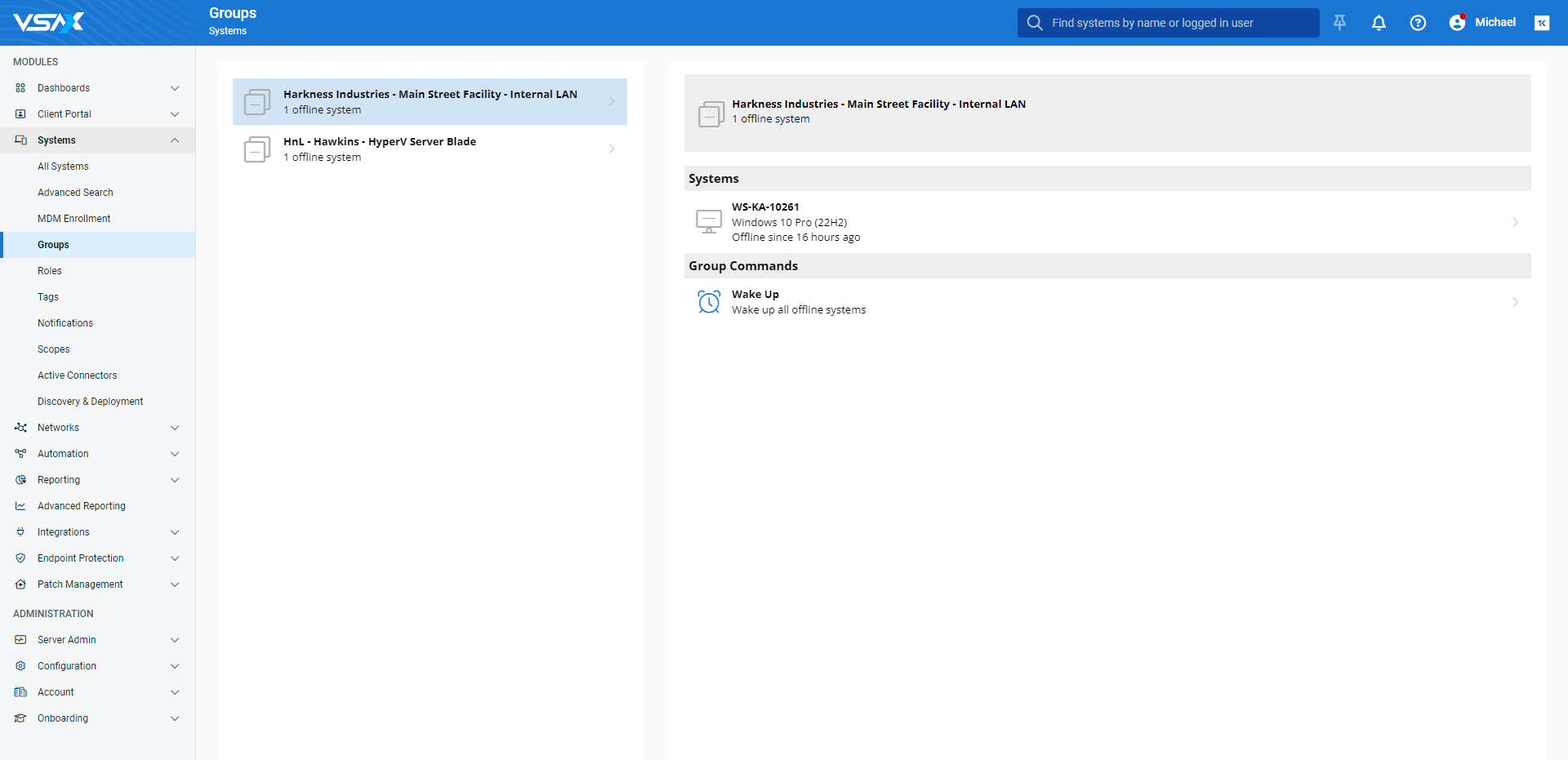Device groups
NAVIGATION Modules > Devices > Groups
From the Groups page, you can view the hierarchies and members of all of the agent groups associated with your VSA 10 tenant.
This article describes the page's layout and functions.NOTE To learn how to create agent groups, refer to Creating agent groups.
Overview
VSA 10 sorts your devices into organizations, sites, and groups so that you can easily differentiate between your clients and efficiently perform device and policy management.
- Organizations represent each of your clients at the corporate level and house their unique locations.
- Sites, as their name suggests, represent each physical location belonging to an organization. Examples of locations can include a storefront, an office, or a data center.
- Agent groups represent any logical collection to which devices are assigned within an organization; for example, a virtual workgroup of distributed employees, or a series of segments within a LAN.
Good to know
Access configurations control which groups and devices are visible on the Groups page. The access level for each of the entities controls whether the entity (such as a device) can only be viewed (Read Only) or can be managed (Full Access).
NOTE Users with Read Only access to devices will not be able to perform management functions on them.
The Device Configuration: General profile is a device-level permission that determines which commands (such as Lock Device, Login, Shut Down, etc.) will be accepted by each device to which the profile is applied via a device configuration policy.
Users who are part of a user-defined team with Full Access permission to a specific organization will see all the devices within that organization on the Groups page. They will also see all of the group tasks and group commands relevant to the types of devices inside each group.
If the group has a policy applied that contains a Device Configuration: General profile, if any of the available group commands are disabled within that profile, you will not see the commands in the page.
To learn more about permissions in VSA 10, refer to User functions and permissions.
Viewing your agent groups
To review your agent group hierarchies, perform the following steps:
From the left navigation menu in VSA 10, navigate to Devices > Groups.
As you navigate, you'll see the following features and fields:
| Feature | Definition |
| Group list | All of the groups associated with your VSA 10 instance appear here, sorted by organization and listed by Organization > Site > Group. Click any group name to view its details. Refer to Group details pane for more information. |
The details pane enables you to view all devices within a group and take basic management actions. It provides the following information and features.
Systems
This section enumerates all protected endpoints in the group. Clicking any device's name opens a pivot page where you can review its basic attributes and take basic management actions. For pivot page field definitions, refer to Device details pane.
| Field | Definition |
Host details | Hostname, operating system, last check-in date, online status; for icon definitions, refer to Device and status icons |
Group Commands
This section enables you to send automation tasks to all devices associated with the group. Click any listed action to queue it for broadcast.
| Field | Definition |
| Wake Up: Send a Wake-on-LAN (WoL) command to all offline devices in the group |




